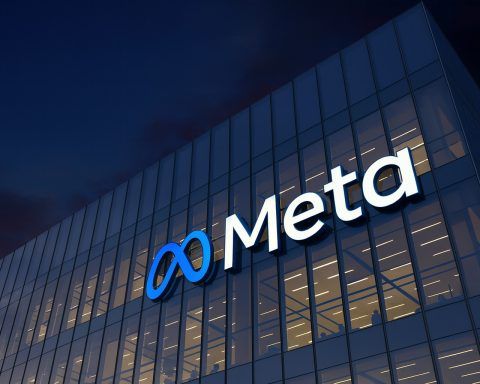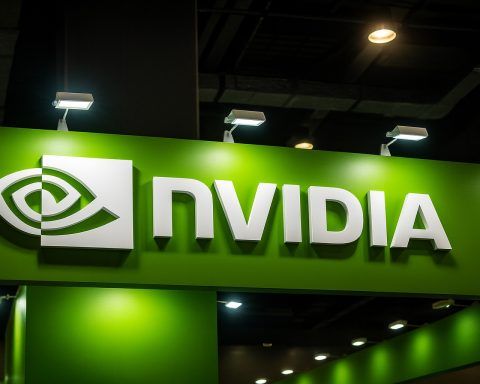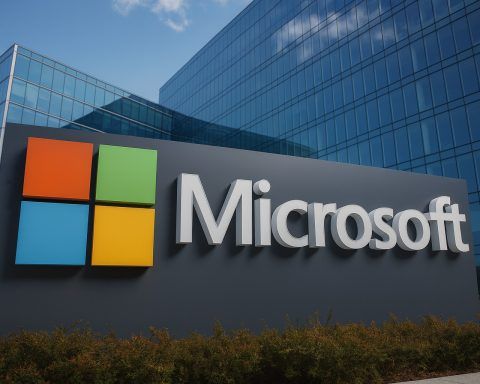- Nvidia became the world’s first $5 trillion company as its AI-focused chips surge in demand [1]. An analyst noted “Nvidia hitting a $5 trillion market cap is more than a milestone; it’s a statement” as Nvidia has transformed from chipmaker into an “industry creator” [2].
- Microsoft & OpenAI reset their multibillion-dollar partnership. Under a new deal, OpenAI will buy an additional $250 billion of Azure cloud services and Microsoft retains AI model rights (with an independent panel to verify any AGI breakthrough) [3] [4]. Microsoft drops its “right of first refusal” on OpenAI’s compute, giving OpenAI more cloud freedom [5].
- Google unveiled Gemini Enterprise, an AI platform for businesses [6]. Built on Google’s advanced Gemini models, this “new front door” lets employees chat directly with company data and build custom AI agents for workflows [7]. Early adopters like HCA Healthcare and Best Buy report improved operations using Gemini to tap their internal knowledge.
- Tech capex bonanza: Meta and Alphabet each hiked their AI spending. Meta forecast “notably larger” capital outlays in 2026 to build AI data centers (Zuckerberg vowed to spend “hundreds of billions of dollars” on AI infrastructure [8]). Alphabet boosted 2025 capex to $91–93 billion (from $85 billion prior) citing strong AI-driven growth [9]. Overall, Meta, Google and Microsoft are raising AI budgets by tens of billions to secure more chips, power and servers [10] [11].
- AI talent and tools: Google’s AI Studio added Vibe Coding, which auto-generates an app’s code framework from a simple description [12]. Google Labs (with DeepMind) also launched Pomelli, which turns a company’s website into a “brand kit” and automatically generates marketing assets [13]. Meanwhile Anthropic bolstered Claude for Finance with a native Excel plug-in and live data feeds, letting analysts automate complex financial models inside spreadsheets [14].
- Investments & acquisitions: Intel is reportedly in talks to buy AI chip startup SambaNova (valued under $5 billion), aiming to bolster its stalled AI GPU efforts [15]. CoreWeave (an AI cloud provider) announced it will acquire Marimo (creator of an open-source AI-powered Python notebook), aiming to “accelerate how developers build and deploy AI” [16] [17]. As CoreWeave’s VP said, “supporting the open-source community…unlock[s] the pace of innovation that modern AI demands” [18].
- Big projects: In Washington, the Energy Department formed a $1 billion partnership with AMD [19]. They will build two new supercomputers (Lux and Discovery) using AMD’s latest AI chips to tackle fusion energy, cancer research and more. The first (Lux) will go live in 6 months on AMD’s MI355X chips [20], and the second (Discovery) by 2028 with AMD’s MI430 series [21]. These machines aim to “supercharge” science using AI-driven simulation and data-crunching [22].
- Regulation & geopolitics: Governments are moving on AI. India proposed strict new rules requiring clear labeling of AI-generated content (deepfakes must cover at least 10% of an image or audio) to curb misinformation [23]. At the APEC summit, China’s Xi Jinping called for a new “World Artificial Intelligence Cooperation Organization” to set global AI governance norms [24]. (The U.S. has so far rebuffed international AI rules.) In U.S. Congress, lawmakers inserted a chip-priority plan (the “GAIN AI Act”) into defense spending, demanding domestic chipmakers give U.S. buyers first access – a provision now tied up in budget negotiations [25].
- Bubble or boom? Federal Reserve Chair Jerome Powell urged caution but optimism. He noted that AI companies “have earnings” and that “AI investment is a major source of growth today” [26], suggesting the AI surge is grounded in productivity gains, not pure hype. Still, analysts debate whether current valuations are stretched (some warn that if investors demand cash-flow returns, the AI “flywheel” might slow [27]).
AI Market and Investments
The stock market is pricing in massive AI bets. Nvidia became the first $5 trillion company (in late October) as its chips power most generative AI models [28]. Hargreaves Lansdown analyst Matt Britzman hailed the milestone: “Nvidia hitting a $5 trillion market cap is more than a milestone; it’s a statement” [29], noting Nvidia’s shift from hardware vendor to “industry creator.” Even with such gains, some experts warn of overheating – a Reuters piece noted concerns of a possible bubble once cash flows are demanded [30].
Meanwhile, Meta, Alphabet and Microsoft are doubling down on building out AI datacenters. In late October, Meta said it will dramatically raise spending on AI next year [31], with CEO Mark Zuckerberg pledging “hundreds of billions of dollars” for AI data-center capacity [32]. Alphabet likewise jumped its 2025 capital budget to $91–93 billion (versus $85 billion earlier), attributing it to “strong AI demand” [33]. In short, Big Tech is pouring multi-year, multi-hundred-billion-dollar investments into GPUs, servers and power – betting that the AI era’s payoff will justify today’s outlays.
On the corporate-front, Amazon has also refocused. In October it announced cuts of 14,000 corporate jobs – not as an AI-automation play but to “move faster” and fund the next wave of AI initiatives [34]. Amazon’s CEO Andy Jassy emphasized the goal is a leaner organization to speed decision-making, even as Amazon continues investing in AWS and AI infrastructure.
AI Tools and Products Rolling Out
New AI-powered products are arriving quickly. Google’s biggest launch was Gemini Enterprise (Oct 9, 2025) [35]: an AI platform that lets employees across a company query internal data, documents and apps through chat and build customized AI agents. Sundar Pichai calls it “the new front door for Google AI in the workplace” [36]. Early pilots (HCA Healthcare, Best Buy) are already using Gemini-powered assistants to streamline operations.
Google also expanded creative tools: its AI Studio now includes “Vibe Coding”, where a developer simply describes the app they want and Google’s AI generates a working code scaffold [37]. Another Google experiment, Pomelli (by Google Labs/DeepMind), auto-generates marketing campaigns for small businesses based on a company’s website. It learns a brand’s style (colors, tone, etc.) and produces coherent ads, posts, landing pages, etc., helping lean teams deliver polished content faster [38].
Anthropic (creator of Claude) likewise added enterprise features. Its Claude for Finance tool gained a native Excel add-in and live market-data connectors, so financial analysts can ask Claude to build or update spreadsheets with external data [39]. The goal is to let experts “stay in familiar tools and move from question to model to deck faster” without sacrificing auditability [40].
In hardware, chipmakers are fighting back against Nvidia’s dominance. Intel was reported to be in talks to buy AI chip startup SambaNova [41]. SambaNova makes AI processors optimized for training large models; acquiring it (at a price below the startup’s $5 billion 2021 valuation) could give Intel a faster track in AI chips [42]. Separately, AMD just landed a huge win: the US Department of Energy announced a $1 billion collaboration with AMD [43] to build two new supercomputers (Lux and Discovery). These systems – using AMD’s latest MI300-series GPUs – will tackle fusion energy, cancer research and more, with the Lux machine to come online in mid-2026 [44].
Startups are also active. The cloud-AI startup CoreWeave agreed to acquire Marimo Inc. (makers of an open-source, AI-powered Python notebook) to embed it into CoreWeave’s platform [45]. CoreWeave’s co-founder Brian Venturo says this move “support[s] the open-source community and unlock[s] the pace of innovation that modern AI demands” [46]. (CoreWeave has been on a buying spree, also merging in Weights & Biases and others, to create an end-to-end AI development platform.)
Government Moves on AI
Regulators globally are eyeing AI. In the U.S., Congress wrestled over the 2026 defense bill. The Senate included the GAIN AI Act – requiring chipmakers to give U.S. buyers first dibs on advanced processors – but the House version did not [47]. The final bill (due by December 2025) will decide whether such AI chip prioritization becomes law. Meanwhile, President Trump met with Chinese leader Xi at the APEC summit; even absent formal talks, tech issues loom large. (Notably, Nvidia’s founder Jensen Huang is preparing to meet Xi, as U.S. export controls on Nvidia’s new chips are a tension point [48].)
Overseas, India is proposing stringent new rules on AI platforms [49]. The draft regulations would force platforms (Google, OpenAI, Meta, X, etc.) to label AI-generated images and videos clearly – for example, 10% of an image area must carry an “AI-generated” overlay [50]. Users uploading content would have to declare if it’s AI-made, and platforms must trace such content via metadata [51]. The aim is to fight misinformation and deepfakes (India has already seen election disinformation scares and Bollywood lawsuit over AI likenesses). A policy expert noted these would be “among the first explicit attempts globally to prescribe a quantifiable visibility standard” for AI media [52].
In Asia-Pacific, Chinese President Xi proposed creating a “World Artificial Intelligence Cooperation Organization” at APEC [53]. His idea: a UN-like body to set AI rules and make AI a “public good” for all countries. The U.S. has so far skipped multilateral AI regulation efforts, but Xi’s pitch signals a push to shape global AI governance.
Ethical and Economic Debates
With rapid advances come big debates. Fed Chair Jerome Powell noted to CNBC that unlike the dot-com era, “AI investment is a major source of growth today” [54]. He stressed that leading AI firms “have earnings”, implying the boom is backed by real business and not pure speculation. This encouraged view treats AI as solid “productive capital formation” rather than a bubble [55]. Yet some analysts caution that sky-high AI valuations hinge on future productivity – if investors start demanding cash-flow returns instead of capacity pledges, the market could reprice.
Meanwhile, experts are divided on the long-term risks of AI. OpenAI’s Sam Altman has famously predicted AGI is imminent – “we are now confident we know how to build AGI” – raising expectations that human-level AI may arrive this decade [56]. At the same time, figures like OpenAI co-founder Ilya Sutskever have sounded dire warnings. In an AI safety conference, Sutskever cautioned that an uncontrolled superintelligence could unleash “irreparable chaos” or even human extinction [57]. This sharp contrast – from bullish AGI timelines to existential risk fears – underscores the high stakes and uncertainty as AI marches ahead.
In summary, late October 2025 saw breakneck AI momentum: record valuations, major product launches, flood of corporate spending, and the first real tussles over how to manage AI’s societal impacts. As one commentator put it, we are witnessing “the most exciting, terrifying rollercoaster in tech history” – and experts say we’d better keep holding on tight.
Sources: Recent reports and press releases (Oct 2025) from Reuters, Microsoft, Google, Anthropic, AMD and others [58] [59] [60] [61] [62] [63] [64] [65] [66] [67] [68].
References
1. www.reuters.com, 2. www.reuters.com, 3. blogs.microsoft.com, 4. blogs.microsoft.com, 5. blogs.microsoft.com, 6. blog.google, 7. blog.google, 8. www.reuters.com, 9. www.reuters.com, 10. www.reuters.com, 11. www.reuters.com, 12. binaryverseai.com, 13. binaryverseai.com, 14. binaryverseai.com, 15. www.reuters.com, 16. www.coreweave.com, 17. www.coreweave.com, 18. www.coreweave.com, 19. www.reuters.com, 20. www.reuters.com, 21. www.reuters.com, 22. www.reuters.com, 23. www.reuters.com, 24. www.reuters.com, 25. www.jdsupra.com, 26. binaryverseai.com, 27. www.reuters.com, 28. www.reuters.com, 29. www.reuters.com, 30. www.reuters.com, 31. www.reuters.com, 32. www.reuters.com, 33. www.reuters.com, 34. binaryverseai.com, 35. blog.google, 36. blog.google, 37. binaryverseai.com, 38. binaryverseai.com, 39. binaryverseai.com, 40. binaryverseai.com, 41. www.reuters.com, 42. www.reuters.com, 43. www.reuters.com, 44. www.reuters.com, 45. www.coreweave.com, 46. www.coreweave.com, 47. www.jdsupra.com, 48. www.reuters.com, 49. www.reuters.com, 50. www.reuters.com, 51. www.reuters.com, 52. www.reuters.com, 53. www.reuters.com, 54. binaryverseai.com, 55. binaryverseai.com, 56. ts2.tech, 57. ts2.tech, 58. www.reuters.com, 59. blogs.microsoft.com, 60. blog.google, 61. www.reuters.com, 62. www.reuters.com, 63. www.coreweave.com, 64. www.reuters.com, 65. www.reuters.com, 66. binaryverseai.com, 67. ts2.tech, 68. ts2.tech






